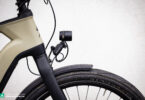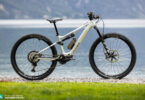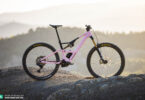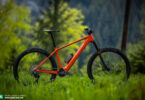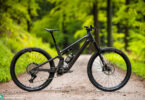You might recognise the Specialized 2.2 motor from one of the most popular eMTB models on the market, the Specialized Turbo Levo. We’ll tell you what makes it so special, and how it fared against the strong competition in our 2023 ebike motor group test!
This review forms part of our big ebike motor comparison test. Here you’ll find an overview of all 13 motors in review, along with lots of exciting background information, and helpful buying advice for your next purchase!
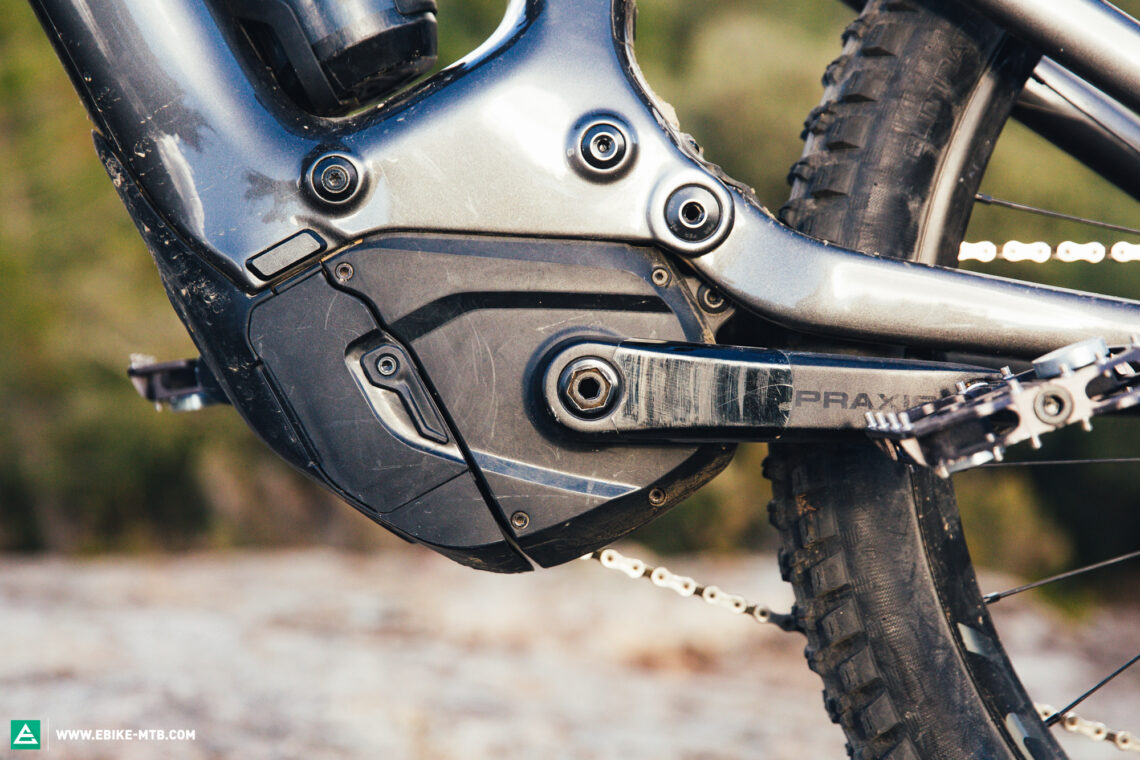
Specialized set a new standard back in 2015 when they introduced the first-generation Turbo Levo, and they’ve always taken a unique approach with their e-mountainbike concepts. True to the company’s “Innovate or die” mantra, Specialized like to take things into their own hands, developing both the motors and the software of their ebikes. For the 2.2 motor, Specialized once again teamed up with German motor manufacturer Brose, using their Drive S Mag as the basis for the new system. While the early Brose motors were known for issues with the internal belts, these have thankfully been addressed, resulting in fewer technical issues.
Specialized employ two motors across their entire ebike range: the full-power 2.2 motor and the minimal-assist SL 1.2 drive, which is also featured in this comparison test. The Specialized 2.2 is the motor of choice for eMTBs like the Turbo Levo, city ebikes like the Vado, and e-SUVs such as the Turbo Tero X. Unlike most bike manufacturers, Specialized have in-depth knowledge of motor systems and can count on their own in-house experts, which gives them total control over product development. To make this possible, the Californian brand has created a dedicated ebike division, which is based in Switzerland and consists of around 70 people. Specialized’s holistic approach brings them a huge advantage, as it allows them to create a tailor-made ecosystem. In addition, they aren’t dependent on the development times and model cycles of third-party motor manufacturers. Needless to say, this approach also has massive impact on the final riding experience, ensuring seamless interfaces, a strong user experience as well as flawless after-sales service, allowing end-users to deal with just one contact person rather than having to go through the painful process of watching different suppliers shifting responsibilities back and forth.

The Specialized 2.2 motor system in detail – All from a single source
With two years of experience under its belt, the Specialized 2.2 motor system is one of the veterans in this test. Its age is also reflected in the dimensions of the hardware. Particularly noticeable is the bulky bottom bracket area around the motor. The Specialized 2.2 shares the same inner workings as the Brose Drive S Mag, which relies on a belt drive and two sprag clutches to transmit the power of the motor. The clutches are completely silent, engaging quickly as well as providing resistance free pedalling when the motor isn’t assisting you. This means that you can easily pedal home if you run out of battery. The 2.2 also shares identical key data with the Drive S Mag, delivering 90 Nm of torque and 410% maximum pedalling assistance. According to the spec sheet, it’s one of the most powerful motors in this test, second only to the Panasonic GX Ultimate powerhouse, which churns out more power, both on paper (95 Nm) and on the trail. At 565 Watts peak power (manufacturer’s specifications), however, the Specialized 2.2 struggles to keep up with the top dogs in this test, like the Bosch Performance Line CX with its 600 watts. That said, numbers on a spec sheet don’t tell the full story, and it’s far more important how well it performs on the trail – in this regard, the Specialized drive is easier to ride than the Panasonic GX Ultimate, for example. Tipping the scales at 2.98 kg, the Specialized 2.2 is the second heaviest full-power motor in the entire test field after the Pinion MGU E1.12, which makes it around 200 g heavier than the Bosch Performance Line CX Race Limited.
Specialized also take care of the peripheral components around the motor system, developing and tailoring the batteries to suit the requirements of the respective bike. Depending on the bike model and spec variant, the Specialized 2.2 motor draws its power from either a 500 or 700 Wh battery that can be removed from the down tube. The “brain” of the motor system is the slim Specialized MasterMind colour display (TCU), which is integrated into the top tube and shows all important riding data like battery charge status in %, support level, riding speed and time. While integrating a display into the top tube is nothing new, Specialized were amongst the first manufacturers to do this, and still set the benchmark with their concept. The system is controlled with a minimalist handlebar remote, which is easy to operate with the left thumb and provides good haptic feedback. Everything about this system is trimmed uncompromisingly towards trail performance. Entry-level models come equipped with Specialized’s Turbo Connect Display (TCD), which only shows basic riding data. In the premium segment, especially in the trekking sector, Specialized still rely on the MasterMind TCD colour display, which has a similar range of functions as the TCU display but also offers a few application-specific extras, including a gear-ratio function for the Enviolo gear hub.


Until recently, the Specialized Mission Control app rounded off the overall package, but this has now been replaced by the new Specialized app. The new app doesn’t do anything new, and is largely based on the previous Mission Control app, recycling many of its functions and features. The partner app is well-structured, easy to use and allows you to fine-tune the maximum power output and intensity of the three support levels: Eco, Trail and Turbo. Moreover, there are three presets called Universal, Battery Friendly and Race, which all have a different character and can be adjusted to your needs and preferences. With the new app, Specialized’s engineers replaced the intuitive sliders of the old Mission Control app with diagrams. The points of the individual support modes can be moved infinitely on the diagram, meaning that you could effectively create an Eco mode that’s just as powerful as the strongest Turbo or even create three identical support modes. However, we’re not entirely sure why anyone would want to do that. However, the Specialized app allows for more in-depth alterations than the Brose ebike app. The app also allows you to track rides, but doesn’t include a navigation function like Brose’s ebike app or Bosch’s eBike Flow app. Unfortunately, at the time of this test, the app also lacked the Smart Control function, which was already available with the old Mission Control app and adjusts the motor and battery output based on how long or how far you’re intending to ride. That said, the function will be added via an update in the near future.
When stopping at your favourite cafe for a slice of cake and a cup of coffee, you can use the System Lock function, which lets you lock the motor system via the app. While this doesn’t prevent your bike from getting stolen, it renders the motor system useless and triggers an alarm (though this could be louder).


The Specialized 2.2 motor in review – The allrounder?
The Specialized 2.2 offers three support modes, Eco, Trail and Turbo. The motor also features the practical Micro-Tune function, which can be activated simply by clicking on the remote, allowing you to adjust the intensity of the motor assistance in 10% increments. When climbing in Turbo mode with the standard setting, the Specialized 2.2 motor provides an authentic shuttle feeling, churning out more or less the same power as the Bosch Performance Line CX Race motor in Race mode, but packing significantly less of a punch. On the other hand, Turbo mode doesn’t engage as abruptly and is easier to modulate, ensuring a more natural ride feel.


Furthermore, the motor deals with cadence fluctuations rather well, preventing beginners with a choppy pedalling style from bouncing around in the saddle. The dynamic Trail mode makes it easy to negotiate steps and obstacles, proving the optimal choice for technical climbs.
Unlike the Bosch and Shimano drives, the Specialized 2.2 motor is as quiet as a mouse downhill, and doesn’t put you off your flow with annoying clunking noises, even on rough descents.
Just like Bosch and Shimano, Specialized are constantly redeveloping their motor system and its range of functions. With the new software, Specialized are breaking new ground and taking a Zwift-like gamification concept to the trail, adding a few fun gimmicks, like the current elevation, GPS data, or the number of jumps and airtime generated – rather than big-fish stories about your latest heroics, you’ll get the bare facts!
Conclusion
All from a single source! Thanks to their holistic approach, Specialized have created a harmonious ecosystem that includes the motor, displays, batteries, remotes and connectivity features. This allows them to create tailor-made solutions for different bike models while at the same time ensuring a high level of performance. On the trail, the Specialized 2.2 motor convinces with a natural ride feeling and excellent modulation, which make it easy to ride for both beginners and experienced riders despite its powerful character – chapeau! In addition, the 2.2 motor allows trail riders to customise the motor’s character down to the smallest detail . The only blemish is the motor’s bulky dimensions, which give away its “older” age.
Tops
- Beginner-friendly
- Holistic concept
- Quiet downhill
Flops
- Bulky motor
For more information, visit specialized.com
The test field
For an overview of our big ebike motor comparison test click here
All ebike motors in test: Bosch Performance Line CX (Click for review) | Bosch Performance Line CX Race (Click for review) | Bosch Performance Line SX (Click for review) | Brose Drive S Mag (Click for review) | FAZUA Ride 60 (Click for review) | GIANT SyncDrive Pro2 (Click for review) | Panasonic GX Ultimate (Click for review) | Pinion MGU E1.12 (Click for review) | Shimano EP801 (Click for review) | Specialized SL 1.2 (Click for review) | Specialized 2.2 | TQ HPR 50 | Yamaha PW-X3 (Click for review)
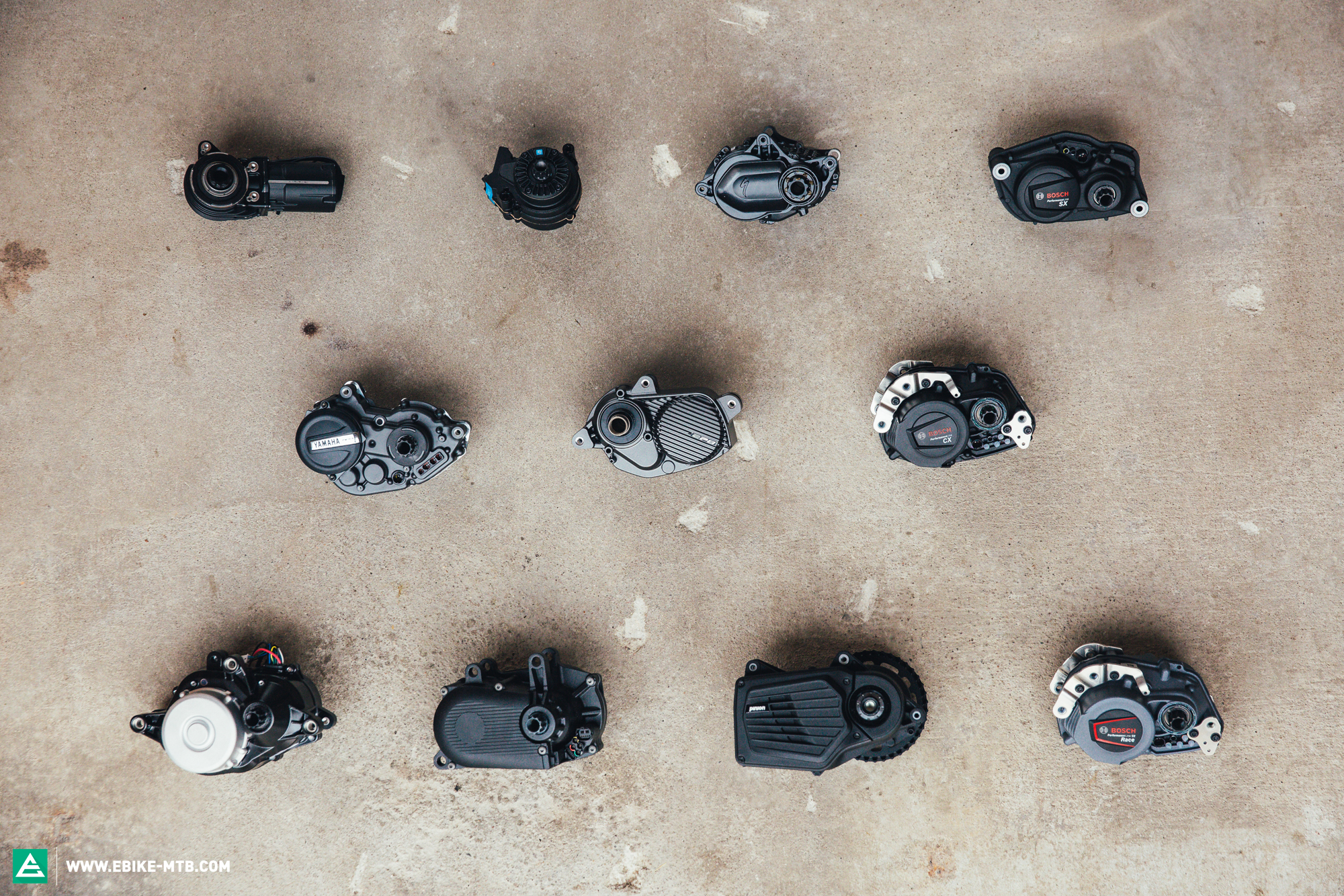
Did you enjoy this article? If so, we would be stoked if you decide to support us with a monthly contribution. By becoming a supporter of E-MOUNTAINBIKE, you will help secure a sustainable future for high-quality cycling journalism. Click here to learn more.
Words: Mike Hunger Photos: Various




